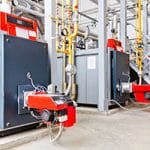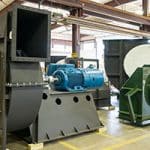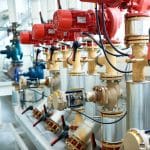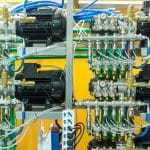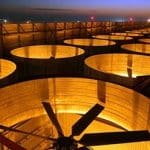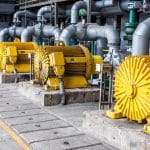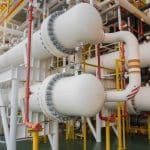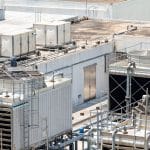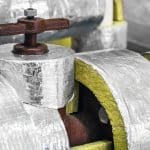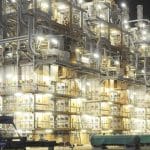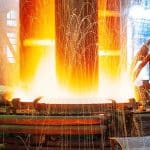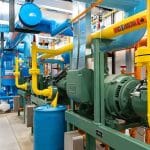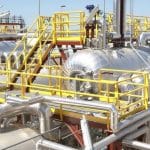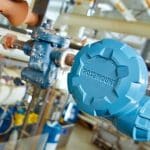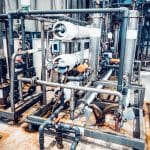The 3 kEys
- Increase the capacity of each furnace, thereby reducing the total number of furnaces in use. This simplification not only lowers maintenance and capital costs but also concentrates energy sources for greater heating efficiency.
- Preheat the feedstock using recovered heat from flue gases or other process streams.
- Upgrade to advanced coil geometries that enhance heat transfer while minimizing pressure drops can lead to better overall efficiency.
Olefins furnaces are the workhorses of industry, crucial for producing key materials like ethylene and propylene. They are also among the most energy-intensive units in industrial operations, and this makes the question of their efficiency a matter of significant cost. By combining cutting-edge technology, process optimization, and diligent maintenance, companies can significantly boost the efficiency of olefins furnaces while maintaining high production levels.
Furnace Capacity and Load
Efficiency isn’t just about how well a furnace performs—it’s also about how many furnaces are required to meet production goals. Increasing the capacity of each furnace allows operators to reduce the total number of furnaces in use. This simplification not only lowers maintenance and capital costs but also concentrates energy sources for greater heating efficiency.
Consolidating furnace operations further amplifies efficiency by leveraging economies of scale. A streamlined furnace system means better resource management, reduced energy consumption, and enhanced operational coordination.
Operating furnaces at their optimal capacity is another essential component of energy efficiency. Both underloading and overloading can result in inefficiencies, so careful load management is key. Additionally, choosing lighter feedstocks can reduce the energy required for cracking processes, further improving performance.
Feedstock Preheating and Heat Recovery
Every furnace operation begins with feedstock selection and preparation, and optimizing its journey through the system is crucial for maximizing energy efficiency. One of the most effective ways to reduce energy consumption is by preheating the feedstock using recovered heat from flue gases or other process streams. Implementing high-efficiency heat exchangers allows operators to harness waste heat that would otherwise be lost, significantly reducing the energy required to bring the feedstock up to the desired cracking temperature.
In addition to direct heat recovery, integrating regenerative and recuperative burners can further improve efficiency by preheating combustion air with exhaust gases. These systems enhance the thermal efficiency of the furnace and lower overall fuel consumption. Properly designed heat recovery networks not only reduce energy demand but also contribute to lower emissions, aligning with sustainability and environmental goals.
Advanced Coil Design and Materials Selection
The performance of an olefins furnace is heavily influenced by the design and material composition of the cracking coils. Upgrading to advanced coil geometries that enhance heat transfer while minimizing pressure drops can lead to better overall efficiency. Helically wound coils, for instance, improve turbulence and increase surface area contact, leading to more uniform heat distribution and higher yields.
Material selection also plays a critical role in optimizing furnace efficiency. High-temperature alloys, such as chromium-nickel steels and ceramic-coated tubes, offer better resistance to oxidation and coking. The use of these advanced materials extends operational life, reduces maintenance downtime, and ensures sustained high heat transfer performance.
Coking Management and Fouling Prevention
Coking is a major challenge in olefins furnaces, as it reduces heat transfer efficiency, increases pressure drop, and necessitates frequent decoking operations. Implementing strategies to minimize coke formation is essential for maintaining furnace efficiency and reducing energy consumption.
One approach is the use of specialized coatings or advanced materials in furnace tubes that resist coke buildup. Proprietary coatings with anti-coking properties can significantly extend the interval between decoking cycles, reducing downtime and operational costs. Additionally, optimizing steam-to-hydrocarbon ratios helps to suppress coke formation while maintaining high selectivity in the cracking process.
Enhanced Combustion Efficiency
Burner technology is a key factor in improving furnace energy efficiency. Low-NOx and ultra-low-NOx burners help reduce emissions while improving combustion stability and fuel efficiency. Implementing staged combustion, oxygen enrichment, or flameless oxidation can enhance heat transfer while reducing energy losses.
Operational parameters such as residence time, feedstock composition, and furnace temperature profiles must be carefully managed to minimize thermal degradation and subsequent coke deposition. Automated control systems equipped with predictive analytics can provide real-time adjustments to operating conditions, optimizing performance while minimizing coking tendencies.
Additionally, the use of advanced combustion monitoring and control systems ensures optimal air-to-fuel ratios, preventing excess air that leads to unnecessary heat losses and inefficiencies. Real-time monitoring of flue gas composition allows operators to fine-tune combustion parameters for peak efficiency.
Digitalization and Advanced Process Controls
The integration of digital tools and advanced process control (APC) systems plays a vital role in energy efficiency optimization. Smart sensors, artificial intelligence (AI), and machine learning algorithms can continuously monitor critical parameters such as furnace temperature, pressure drop, heat flux, and coke formation. By analyzing historical and real-time data, these systems can predict optimal operating conditions and recommend adjustments to enhance efficiency.
Automated optimization software can also assist in dynamically adjusting firing rates, feedstock flow rates, and steam ratios to balance energy consumption and product yields. Digital twins—virtual models of the furnace—enable operators to simulate different operating scenarios, identify energy-saving opportunities, and implement predictive maintenance strategies.
Improving Thermal Insulation
Heat loss is a hidden cost in furnace operations, but it can be mitigated with high-efficiency insulating refractories. These materials reduce heat losses through furnace walls, ensuring more energy is directed to the cracking process. Regular inspection and maintenance of insulation are equally important to prevent leaks and maintain efficiency over time.
The Big Finish
Enhancing the energy efficiency of olefins furnaces is not a single-step solution—it’s a comprehensive process that demands innovation, operational excellence, and a commitment to improvement. From optimizing feedstock handling to increasing furnace capacity and upgrading combustion systems, each strategy contributes to a more sustainable and cost-effective operation.
By adopting these best practices, companies can lower energy consumption, reduce emissions, and achieve their sustainability goals—all while maintaining optimal production levels. The future of olefins furnaces is not just about generating heat; it’s about generating progress toward a greener, more efficient industry.




